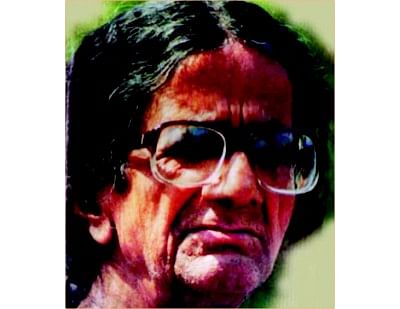Sultan's 17th death anniversary today

Today marks the 17th death anniversary of internationally famed Bangladeshi artist S.M. Sultan. Narail District Administration and S.M Sultan Foundation have planned a special programme to observe the day. The day will begin with placing of wreaths on the artist's grave and offering prayers. A painting competition for children will be held at 9:30am at Shishu Shorgo, Narail, followed by discussion and giving away prizes.
Presided over by Howladar Md. Rakibul Bari A.D.C (general) the discussion is likely to be attended by Md. Zohirul Hoque, Deputy Commissioner, Narail.
Sultan's watercolors are vibrant, usually on the theme -- nature and rural life. Sultan tended to work heavily on his canvas, without living much empty space. His drawings, however, are masterful in their compactness. The lines are powerful and full blown. In his later works though, the composition is less tight and focused, perhaps a sign that Sultan was growing a little impatient with the reality of his time.
Highly philosophical artworks of the great artist spoke of the nature and the people of Bangladesh. His art became the prime source of inspiration for the new generation of painters. Leading a very simple life at his village home, the selfless painter spent most of his life completely engrossed in paint.
After only five years of schooling at Victoria Collegiate School in Narail, Sultan joined his father to work as a mason. He began to draw the buildings his father used to work on and developed an artistic disposition. He wanted to go to Calcutta (Kolkata) to study art, but his family did not have the means to send him there. But Sultan had a strong liking for art. Eventually, Sultan went to Calcutta in 1938 with monetary support from the local landlord, Dhirendranath Roy.
Sultan did not have required qualification for admission to the then Government School of Art in Calcutta. With the help of another patron, Shahid Suhrawardy, who was a member of the governing body of the school, he finally got admitted to the art school. Sultan, however, did not complete his education. After three years in the school, he left it and chose to work as a freelance artist. Sultan had a strong bohemian streak. He travelled to different places of India. He held the first exhibition of his artwork in Shimla in 1946. For a while, Sultan lived and worked in Kashmir. Then after the partition of the sub-continent in 1947, he returned to Narail. The great artist joined the international conference of painters in America in 1950 as a representative of Pakistan, and held exhibitions in New York, Washington, Chicago and Boston and later in London.
A confirmed bachelor, Sultan settled down in an abandoned building in Narail, overlooking the river Chitra, where he lived ever since with an adopted family and pets. Sultan would later build a mini-zoo near his home. There he built a school for children and a menagerie as well.
S.M. Sultan was conferred with the Ekushey Padak and the Cambridge University declared him as the 'Man of Asia' in 1984. He was honoured with Charushilpi Shangshad Shommanona in 1986 and Shadhinota Padak in 1993.
S.M. Sultan died on October 10, 1994, at Jessore Combined Military Hospital after suffering from a prolonged breathing illness.

 For all latest news, follow The Daily Star's Google News channel.
For all latest news, follow The Daily Star's Google News channel. 



Comments